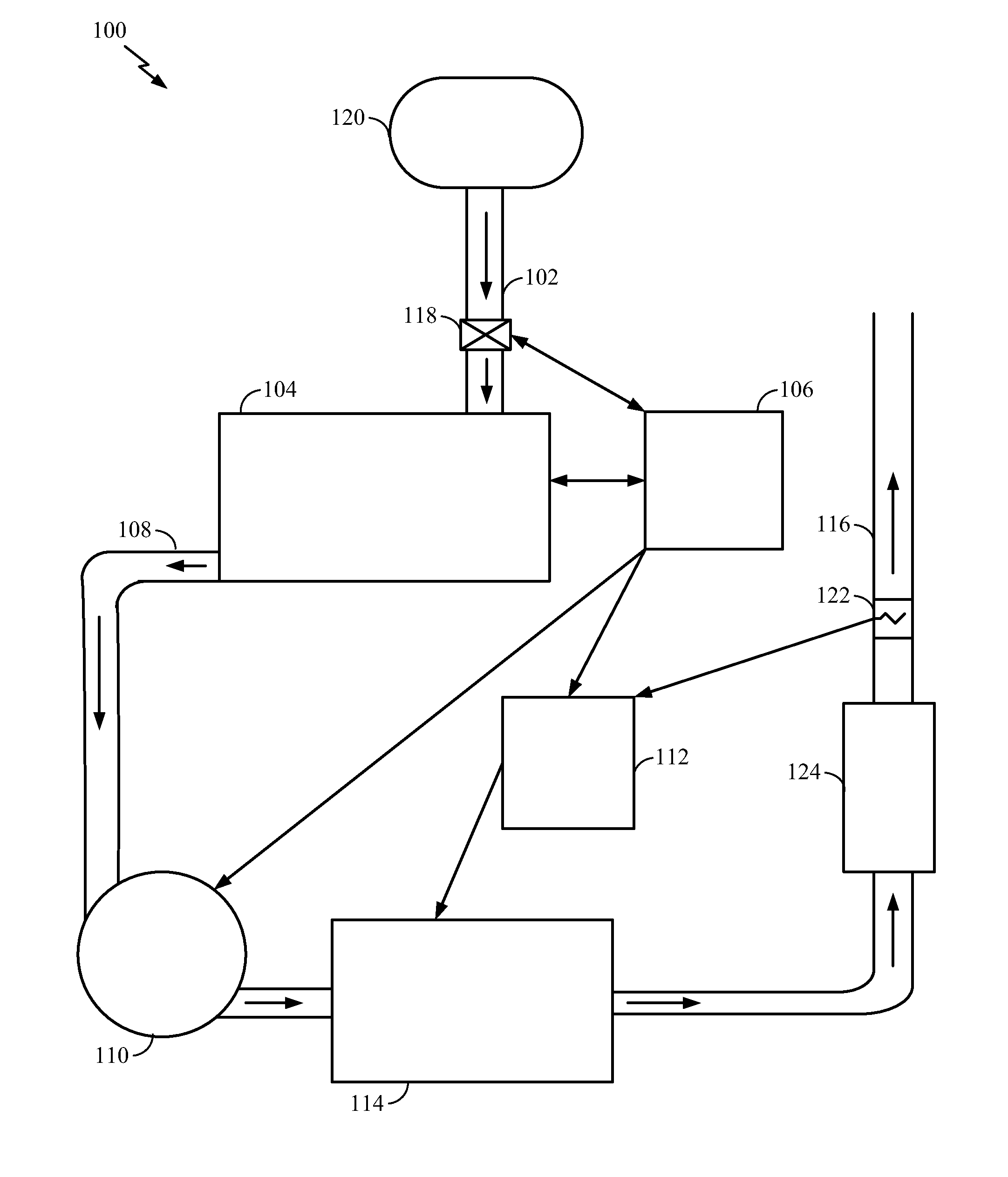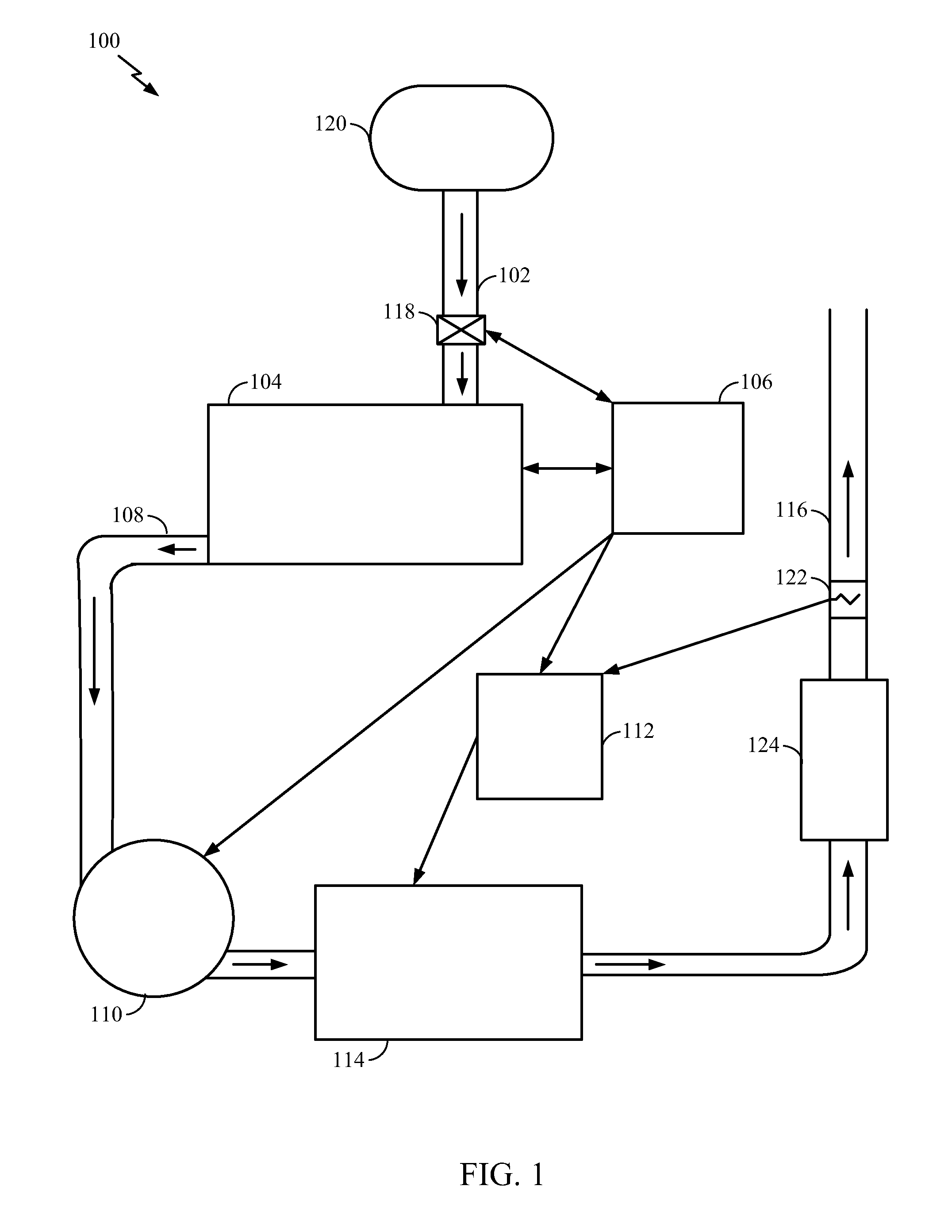Nitrogen oxide abatement in semiconductor fabrication
a technology of nitrogen oxide and semiconductors, applied in the direction of separation process, dispersed particle separation, chemistry apparatus and processes, etc., can solve the problems of increasing the flow of processing gases, increasing the nosub>x/sub>emissions from processing, and facilities reaching or exceeding their regulatory limits. , to achieve the effect of reducing nitrogen oxides, reducing nitrogen oxides, and reducing nitrogen oxides
- Summary
- Abstract
- Description
- Claims
- Application Information
AI Technical Summary
Benefits of technology
Problems solved by technology
Method used
Image
Examples
Embodiment Construction
[0017]A control system and methods for reducing NOx production from a processing system are provided. The control system reduces the production of NOx from an effluent abatement system of the processing system. For example, the control system described herein controls a combustion-type effluent abatement system to minimize NOx production in the effluent abatement system while ensuring adequate abatement of chemicals in the effluent. The control system may also control a plasma-type effluent abatement system to minimize NOx production in the effluent abatement system while ensuring adequate abatement of chemicals in the effluent.
[0018]One embodiment disclosed herein selects an operating mode of an effluent abatement system from a group of operating modes, based on at least one operating parameter of a processing system. For example, in one aspect, the effluent abatement system is operated in a first, minimum capacity mode. On initiation of gas flow into the processing system, in resp...
PUM
 Login to View More
Login to View More Abstract
Description
Claims
Application Information
 Login to View More
Login to View More - R&D
- Intellectual Property
- Life Sciences
- Materials
- Tech Scout
- Unparalleled Data Quality
- Higher Quality Content
- 60% Fewer Hallucinations
Browse by: Latest US Patents, China's latest patents, Technical Efficacy Thesaurus, Application Domain, Technology Topic, Popular Technical Reports.
© 2025 PatSnap. All rights reserved.Legal|Privacy policy|Modern Slavery Act Transparency Statement|Sitemap|About US| Contact US: help@patsnap.com



